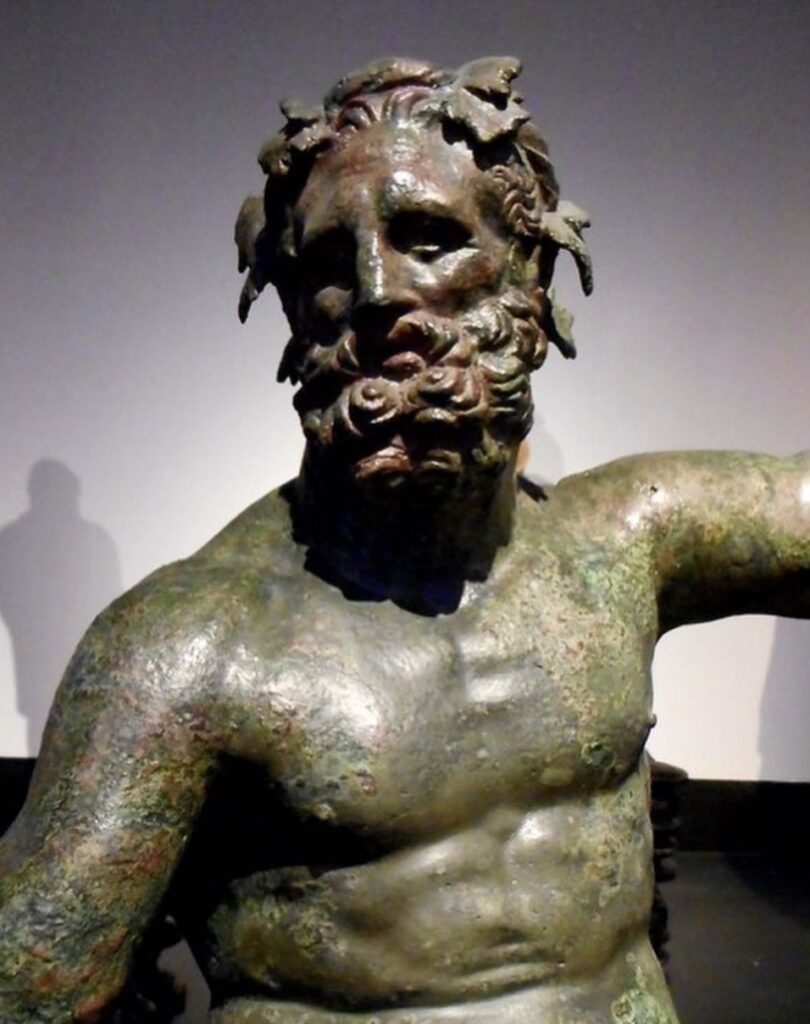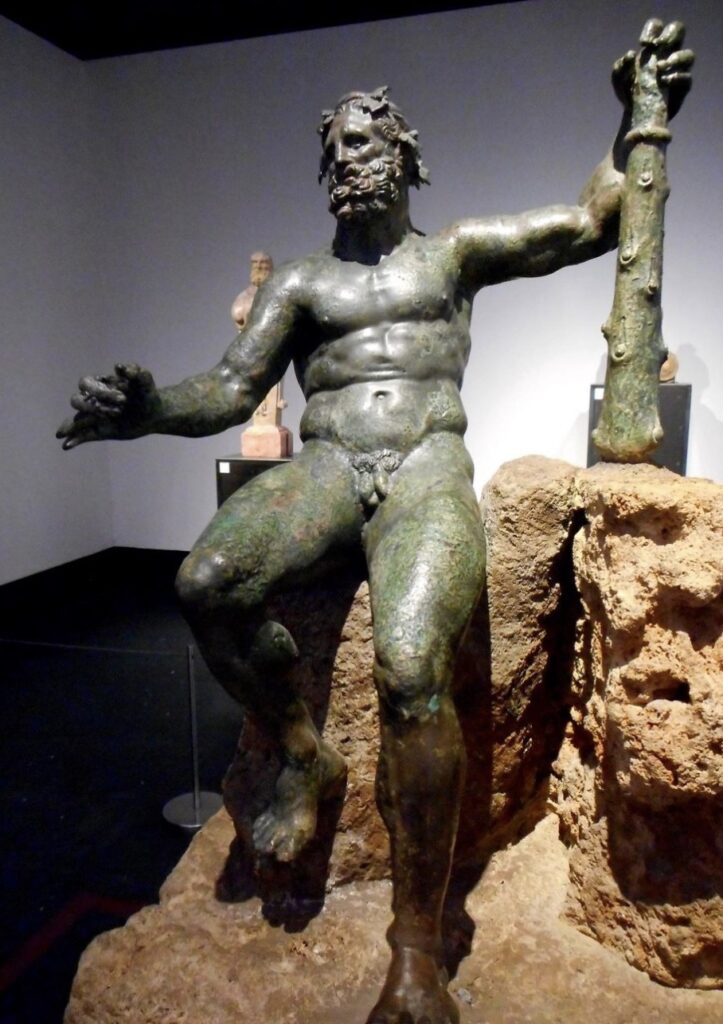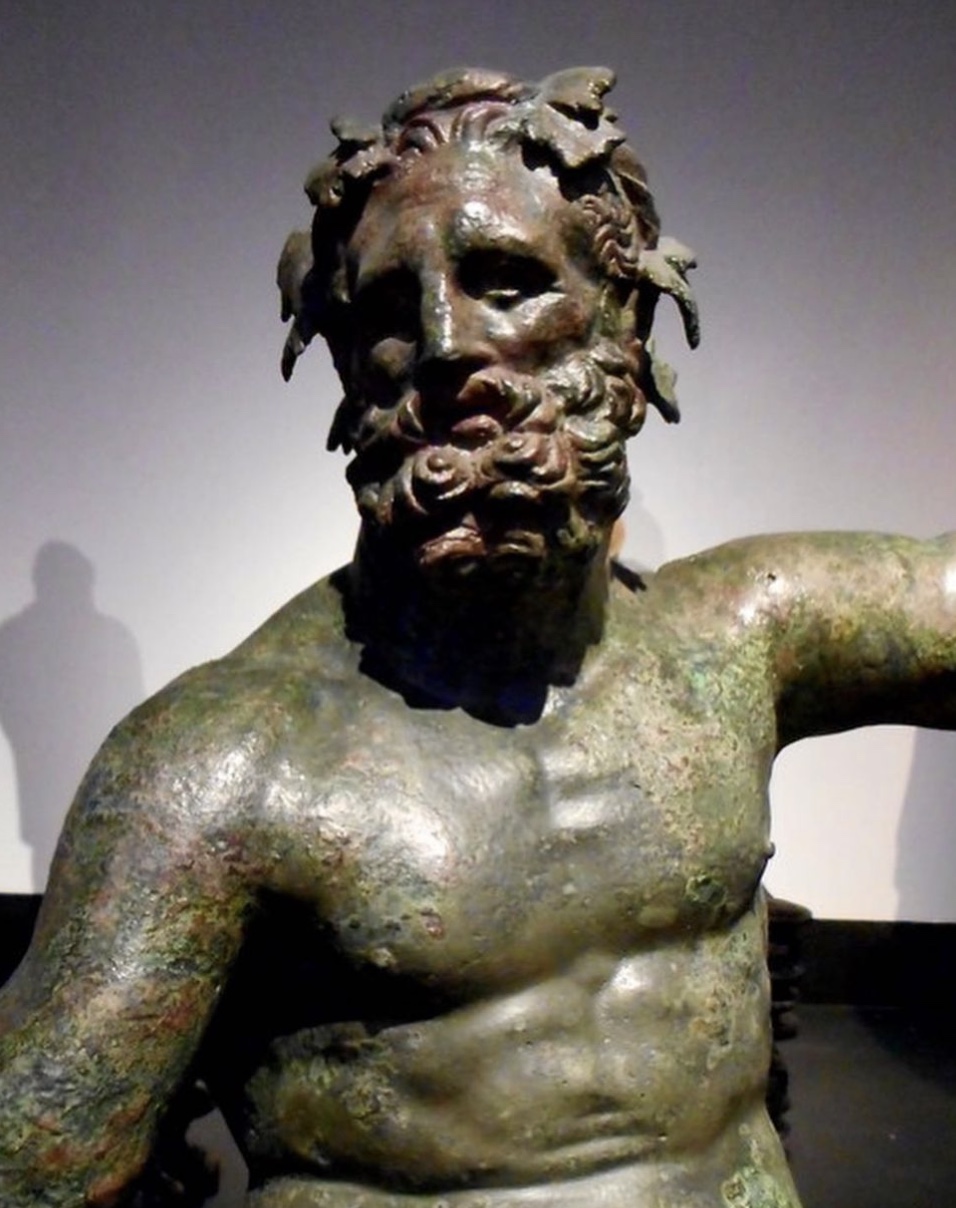’Tis the time for feasting (and hunkering) in much of the Northern hemisphere. As it was for Herakles in his later career, when he had more time to carouse.
And this stage of the hero’s life – athletic action man gone to seed – was explored artistically with great relish beginning in the later 4th century B.C. by Lysippos and into the Hellenistic and Roman periods. One of these Lysippan sculptural innovations was Herakles ‘Epitrapezios’ (on or at the table) a lost bronze showing the hero seated, drinking and dining, and evidently small enough to decorate the table of Alexander the Great while on campaign (so we are told by Statius and Martial).


This example is one of the finest surviving Roman copies in bronze, excavated in a villa near Pompeii but certainly too large (95 cm tall with his rocky seat) for portable table decor. The hero (in the buff, of course) is seated on a limestone shelf, resting his weary body. His extended right hand once held a massive kantharos, his left supports his club, and his wreath signals it’s party time. Somewhat slumped and with a somewhat vacant expression, one can imagine he has been at it for some time: moments away from the other famous sculptural poses…lurching along drunkenly, or casually urinating after a big night.
The Romans wholehearted enjoyment of Herakles indulging himself reached its peak in the 1st century A.D. – the perfect banqueting companion, and a tacit (even heroic) exhortation to let one’s hair down.




